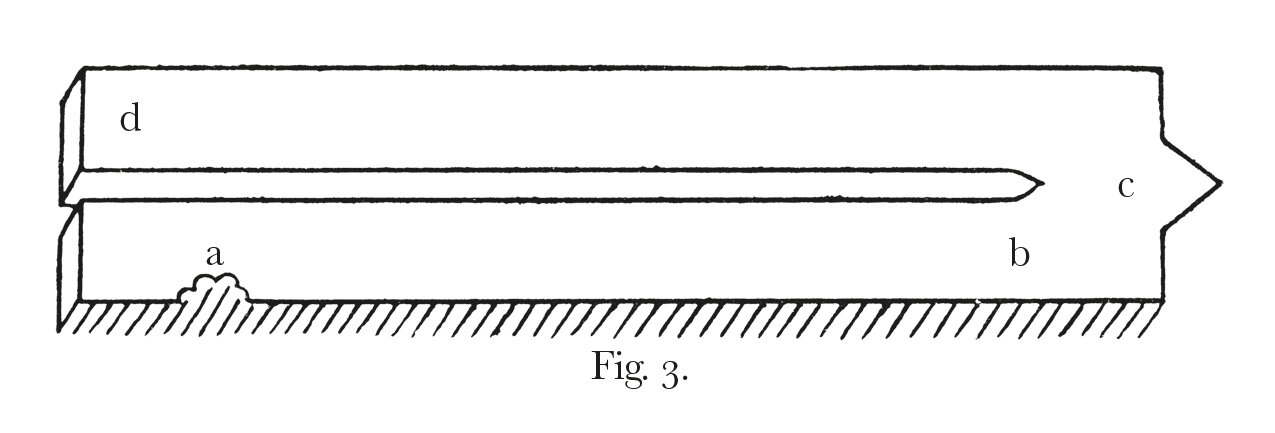From G. J. Romanes 11 August 1877
Dunskaith, Ross-shire:
August 11, 1877.
I was very pleased to get your long and genial letter, which I will answer seriatim.1
The ‘muslin’ in the hypothetical plexus seems to be very coarse in some specimens and finer in others—the young and active individuals enduring severer forms of section than the old. And in exploring by graduated stimuli, areas of different degrees of excitability may be mapped out, and these areas are pretty large, averaging about the size of one’s finger-nails. I am rather inclined to think that these areas are determined by the course of well-differentiated nerve-tracts, while the less-differentiated ones are probably more like muslin in their mesh. But the only reason why I resort to the supposition of nerve-tracts at all is because of the sudden blocking of contractile waves by section, and the fact that stimulus (tentacular) waves very often continue to pass after the contractile ones have been thus blocked.2
I am sorry I made the ungallant mistake about Miss Lawless, but I had no means of knowing. If I had known I should not have written the letter, because I am almost sure the movements of the Medusa were accidental, and my pointing out this source of error may be discouraging to a lady observer.3
I remember thinking you were too diffident about the bloom, but I suppose that is the advantage of experience; it keeps one from forming too high hopes at the first.4
The rest of your letter contains glorious news. Cohn, I suppose, is about the best man in Europe to take up the subject, and although I cannot conceive what else he can do than Frank has done already, it is no doubt most desirable that his opinion should be formed by working at the problems himself.5
The other item about the effects of feeding Drosera is really most important, and in particular about the starch. I have heard the doubts you allude to expressed in several quarters, but this will set them all at rest. It was just one thing required to cap the work on insectivorous plants. What capital work Frank is doing!6
I have nothing in the way of ‘boasting’ to set off against it. The year has been a very bad one for jelly-fish, so that sometimes I have not been able to work at them for several days at a time. The most important new observation is perhaps the following.

Suppose a portion of Aurelia7 to be cut into the form of a pair of trousers, in such a way that a ganglion, a, occupies the bottom of one of the legs. Usually, of course, contractile waves starting from a course along to b, and thence round to c and backwards to d. But in one specimen I observed that every now and then the exact converse took place—viz. the contractile wave starting at d to course to c, b, and a. On now excising the ganglion at a both sets of contractile waves ceased—thus showing that even in the case where they started from d it was the ganglion at a which started them. This power on the part of Medusoid ganglia to discharge their influence at a distance from their own seat I have also observed in other forms of section, and it affords the best kind of evidence in favour of nerves.
On the days when I could get no jelly-fish I took to star-fish. I want, if possible, to make out the functions of the sand-canal and the aviculæ; but as yet I have only discovered the difficulties to be overcome. I had intended to make a cell to cover the calcareous plate at the end of the sand-canal, and to fill the cell with dye, in order to test Siebold’s hypothesis that the whole apparatus is a filter for the ambulacral system;8 but Providence seems to have specially designed that no substance in creation should be adapted for sticking to the back of a starfish.
The aviculæ are very puzzling things. I am sure Allen is wrong in his hypothesis of their function being to remove parasitical growths;9 for, on the one hand, parasites are swarming around them unheeded, and on the other, they go snapping away apparently at nothing. It is more easy, however, to say what they are not than what they are.
I went a few days ago to see the vine. It is now five feet high and vigorous, but I believe spring is the proper time for grafting.10
With best thanks for your ‘boasting’ and good wishes, I remain very sincerely and most respectfully yours, | Geo. J. Romanes.
Footnotes
Bibliography
Romanes, George John. 1876. The physiology of the nervous system of medusae. [Read 28 April 1876.] Proceedings of the Royal Institution of Great Britain 8 (1875–8): 166–77.
Siebold, Carl Theodor von. 1836. Zur Anatomie der Seesterne. Archiv für Anatomie, Physiologie und wissenschaftliche Medicin (1836): 291–7.
Siebold, Carl Theodor von. 1848. Lehrbuch der vergleichenden Anatomie der Wirbellosen Thiere. Part 1 of Lehrbuch der vergleichenden Anatomie by K. von Siebold and H. Stannius. Berlin: Verlag von Veit & Comp.
Summary
Believes in differentiated nerve-tracts [in Medusa] because of experiment in which contractile waves blocked. [See GJR’s "Evolution of nerves", Nature 16 (1877): 231–3, 269–71, 289–93.] Did not know author of MS was Miss Lawless. Describes experiment on contractile waves in Aurelia. Also studying starfish.
Letter details
- Letter no.
- DCP-LETT-11103
- From
- George John Romanes
- To
- Charles Robert Darwin
- Sent from
- Dunskaith
- Source of text
- E. D. Romanes 1896, p. 57
Please cite as
Darwin Correspondence Project, “Letter no. 11103,” accessed on 20 April 2024, https://www.darwinproject.ac.uk/letter/?docId=letters/DCP-LETT-11103.xml


